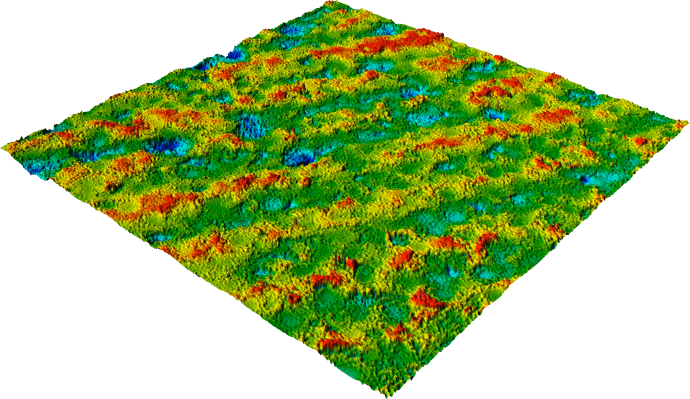Analyze every detail
From wafers to piston rings and pacemakers, precision is essential in every detail. Our high-precision measurement systems provide fast, non-destructive roughness analysis of rough or smooth object surfaces.
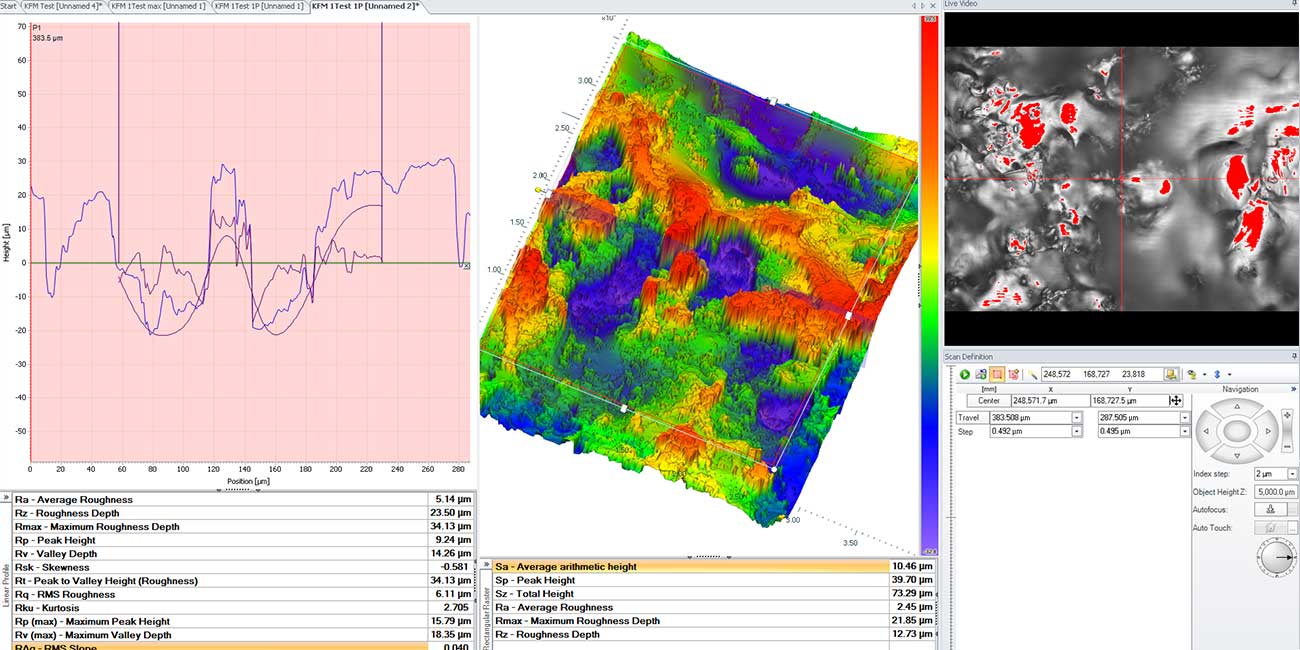
Roughness Analysis
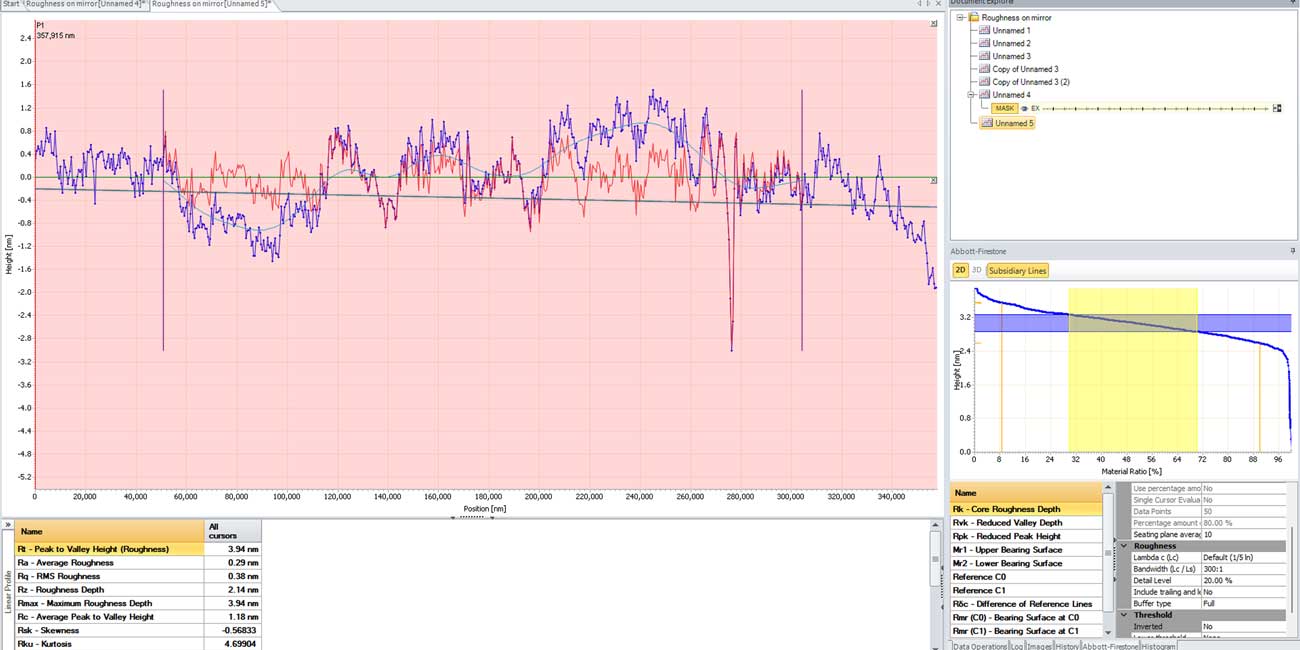
2D-Roughness (R-Parameter)
With our profilometers you can determine roughness in seconds in 2D, whether you’re interested in average roughness (Ra), roughness depth (Rz), or total profile height. Our manual software ScanCT allows you to do this with just a few clicks. Alternatively, you can automate and speed up your measurements with ASCAN.
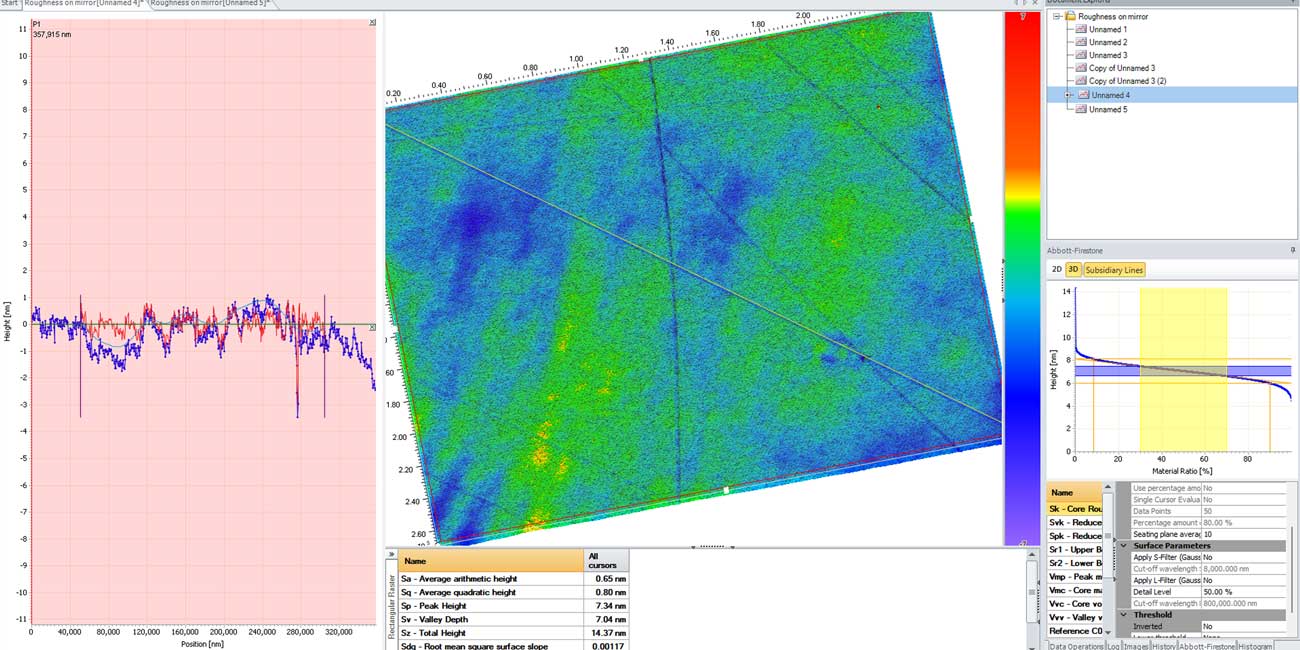
3D-Roughness (S-Parameter)
3D roughness measurement captures the entire surface structure, offering a more comprehensive view than 2D profile measurements. Our software makes analyzing S-parameters, such as mean arithmetic height (Sa) or maximum height (Sz), fast and easy. Simply select the area and analysis type, and results are calculated instantly. Options like S- or L-filters can be adjusted with just a few clicks.
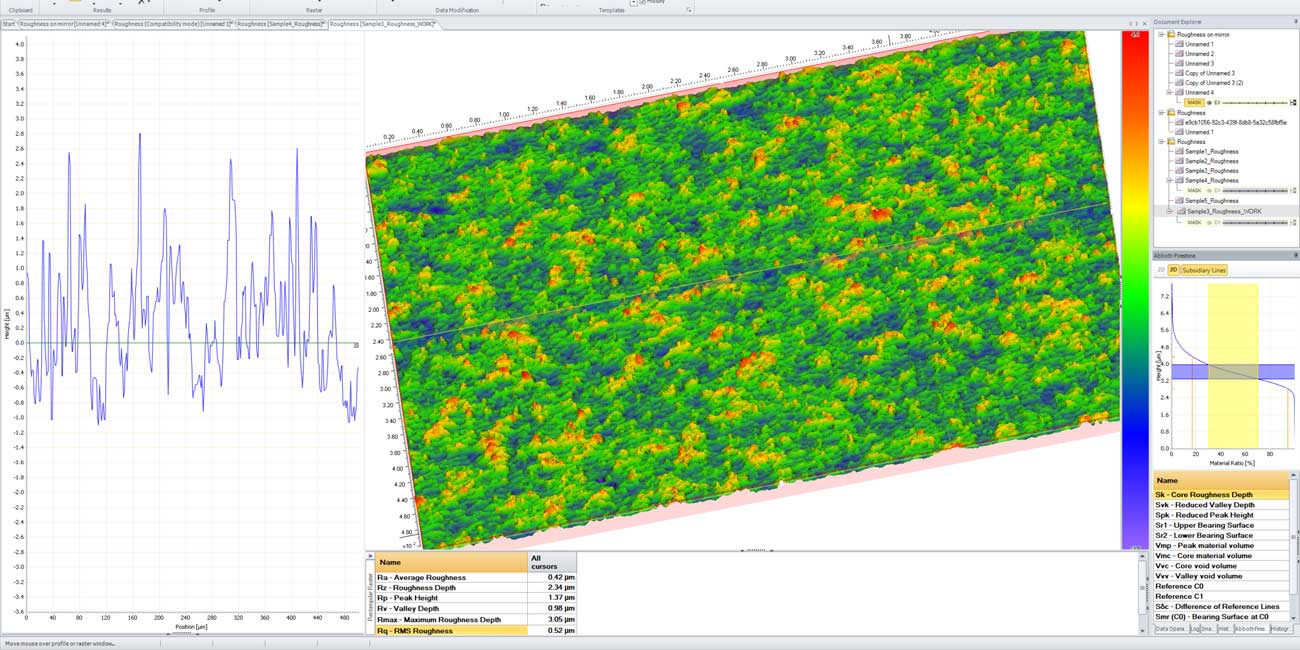
R-Parameter on an area
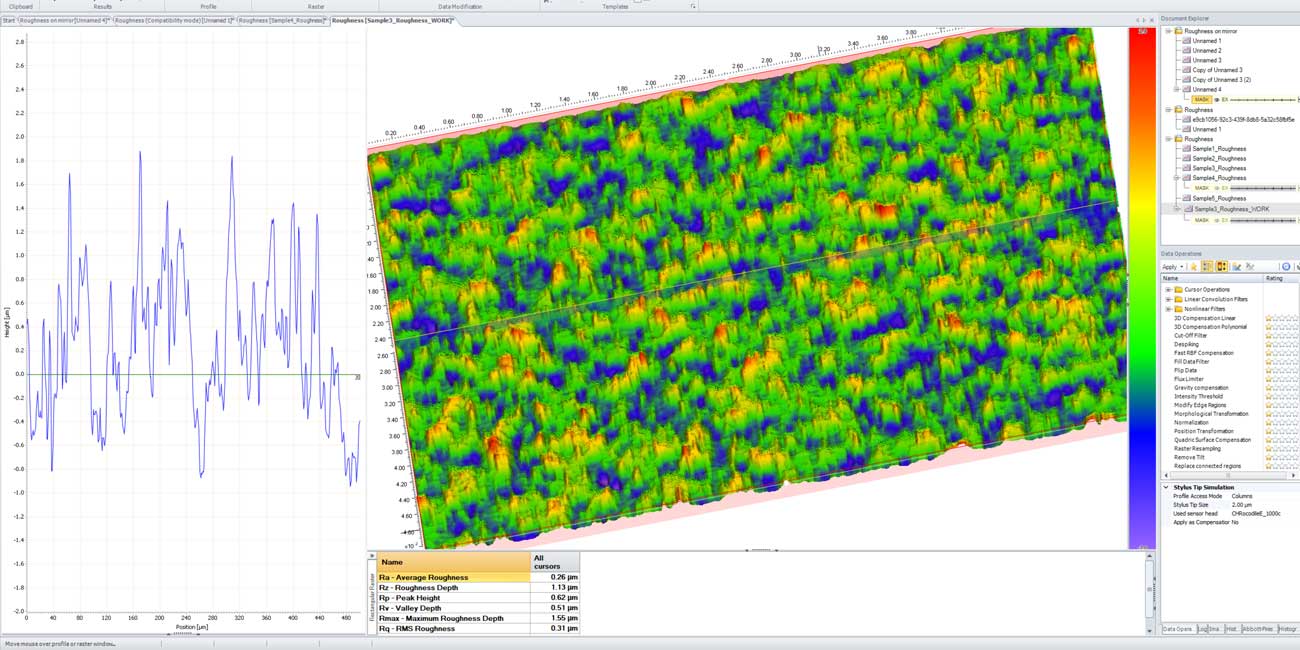
Stilus tip simulation
The results of the optical roughness measurement can be compared directly with the results of traditional tactile measurement methods using the stylus tip simulation. This enables a consistent evaluation and interpretation of the surface structure regardless of the measurement method used.
Automate your Roughness measurements with ASCAN
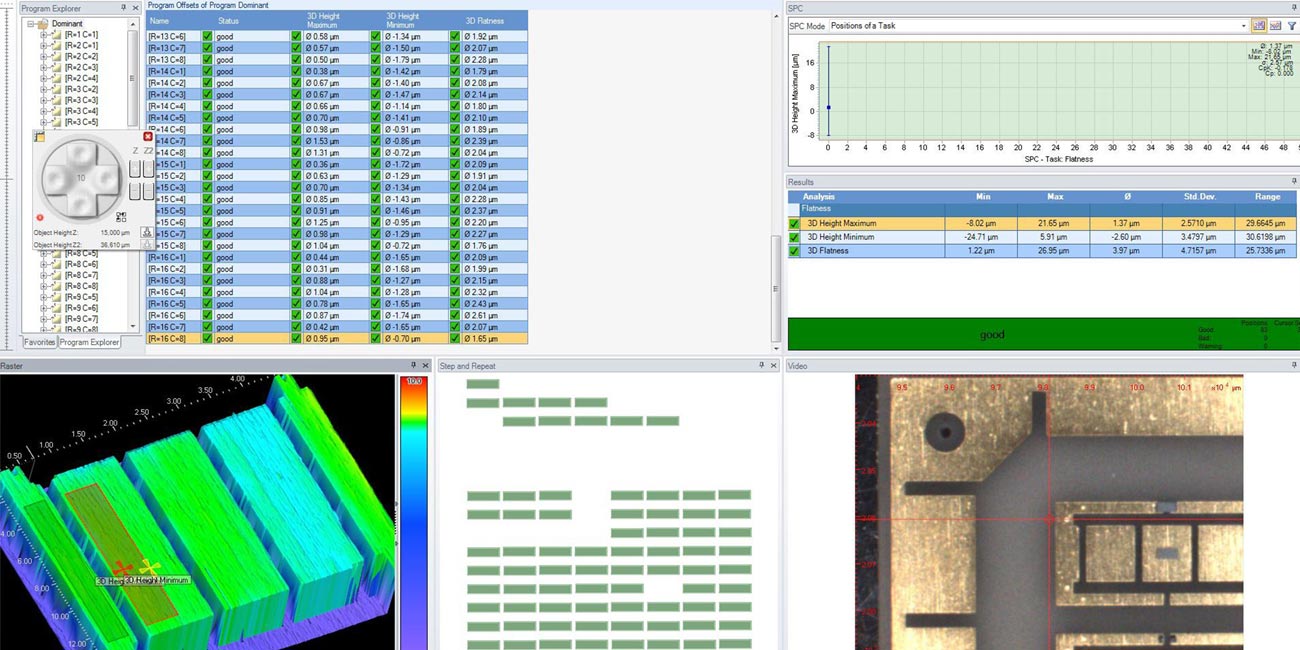

Do you have question about your Roughness measurements?
Non-Contact Measurement
For roughness values below Ra 0.25 we provide systems with white light interferometers for highly accurate roughness measurements and a z-resolution down to 0.1 nanometer. For expected values above our systems can be used with chromatic confocal sensors for high-speed measurements also on larger areas.
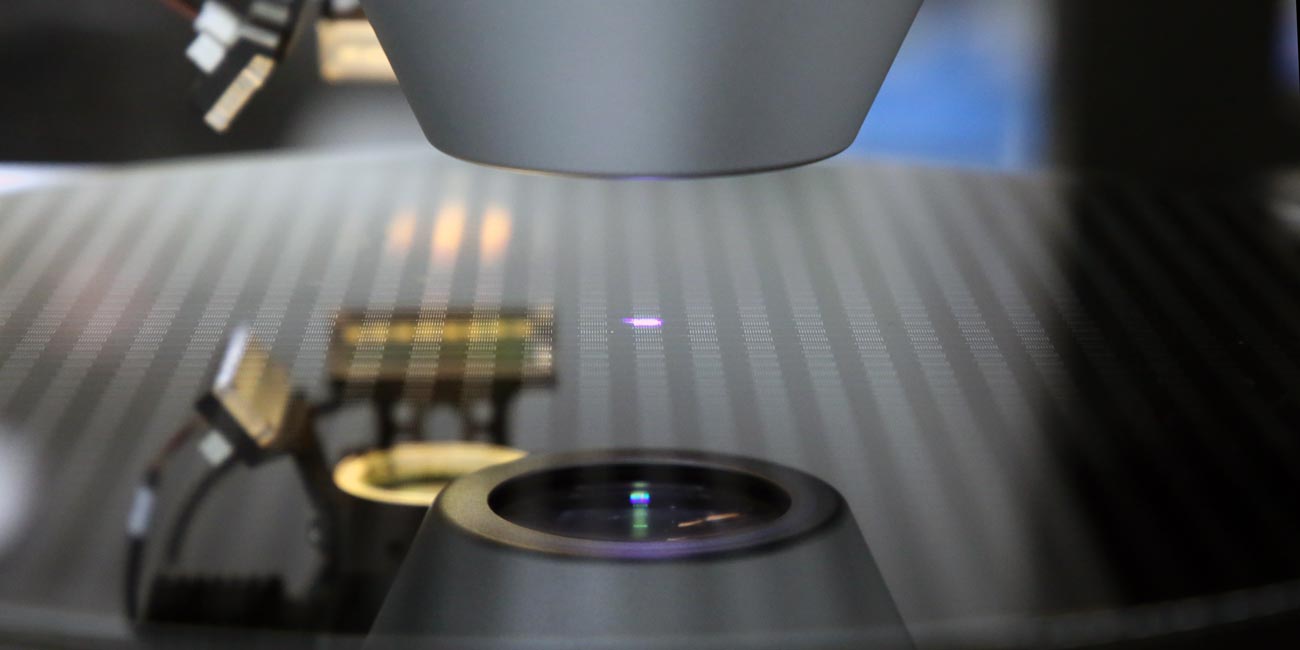
Chromatic Confocal
For roughness measurements as fine as Ra 0.25 and above chromatic confocal sensors offer the perfect balance of high-speed and accuracy across nearly all surfaces and materials
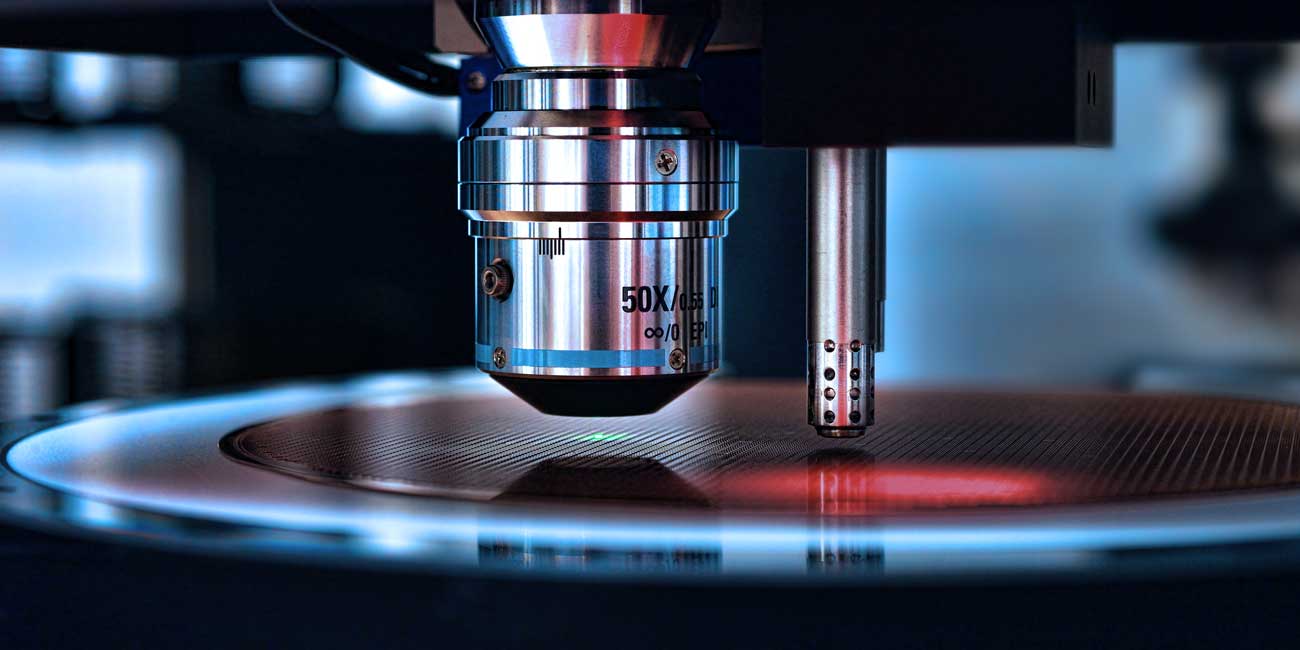
3D White Light Interferometer
For smooth surfaces, our White Light Interferometer delivers Z-resolution as fine as 0.1 nm, enabling precise roughness measurements on polished wafers, mirrors, and other extremely smooth materials.
Examples
With our wide range of sensor technologies, roughness can be accurately measured on nearly any material.
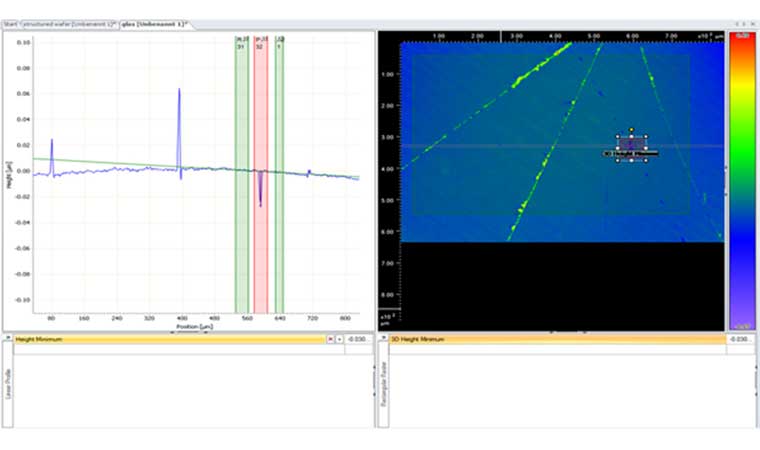
Wafer
Tiny scratches, minute defects or holes – we offer metrology systems for roughness measurements also on polished wafers with a z-resolution down to 0.1 nanometer and a lateral resolution in sub-micron.
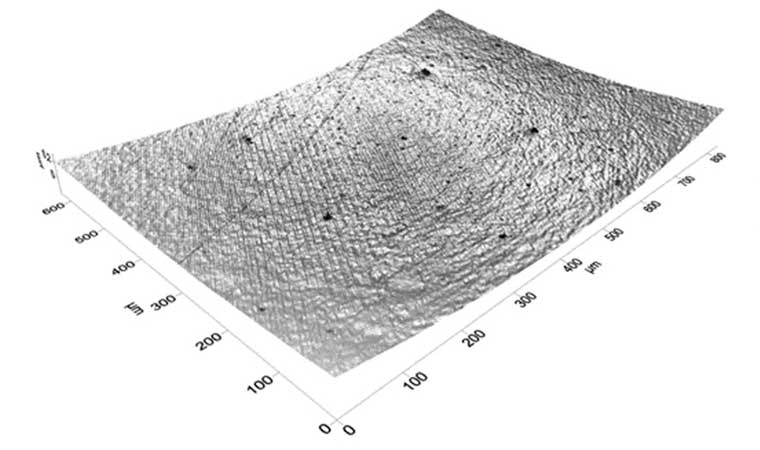
Glass
A white light interferometer (WLI) sensor is used to measure very smooth surfaces. This method is ideal for materials such as glass or mirrors.
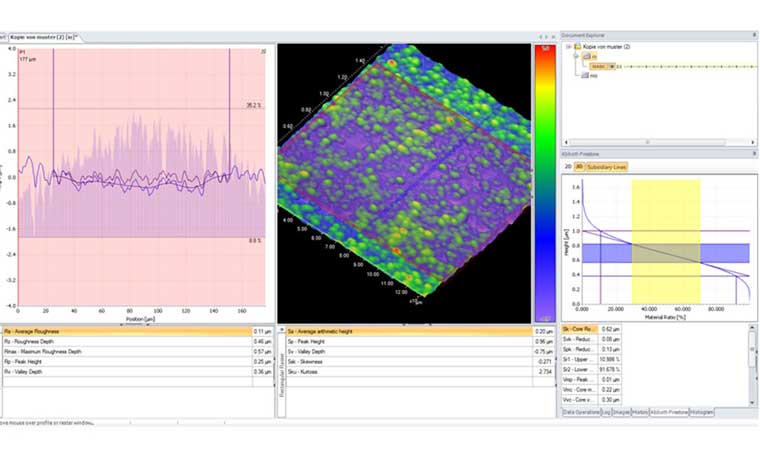
Gold Surface
With up to 1.15 million data points per second, chromatic confocal white light sensors are ideal for 3D roughness measurements on larger surfaces. Additionally, they offer a resolution of up to 3 nm.
Other Applications
Measure coplanarity with seating or regression plane, local heights of pins, pads, bumps, connectors and more.
Measure Flatness, Bow, Warp and more of substrates, wafer or any other sample.
Let's discuss your needs to find the best solution for you.
General
cyberTECHNOLOGIES GmbH
Georg-Kollmannsberger-Straße 3
85386 Eching-Dietersheim
Germany
